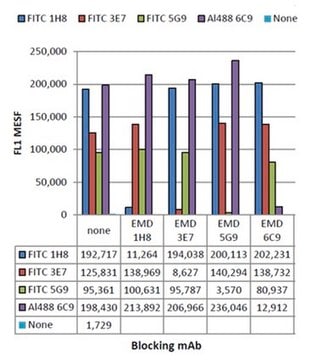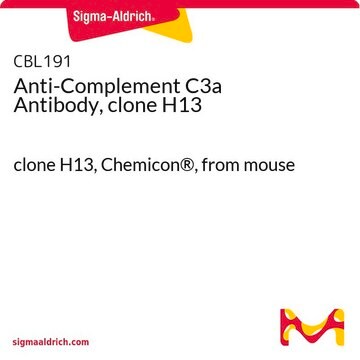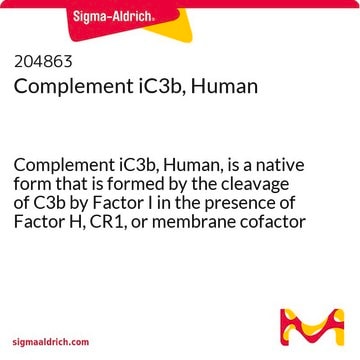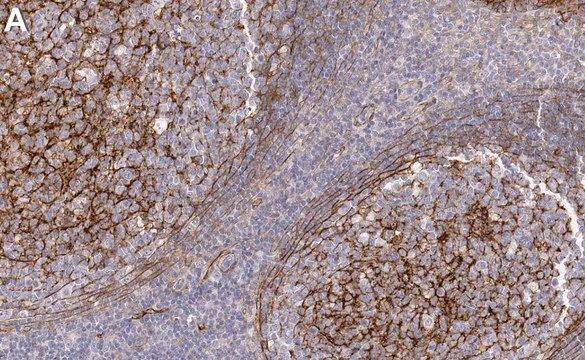MABF1978
Anti-Complement C3a/C3a (desArg) Antibody, clone K13/16
clone K13/16, from mouse
Sinonimo/i:
Complement C3a, C3 and PZP-like alpha-2-macroglobulin domain-containing protein 1
About This Item
Prodotti consigliati
Origine biologica
mouse
Livello qualitativo
Forma dell’anticorpo
purified antibody
Tipo di anticorpo
primary antibodies
Clone
K13/16, monoclonal
Reattività contro le specie
human
Confezionamento
antibody small pack of 25 μL
tecniche
flow cytometry: suitable
immunohistochemistry: suitable (paraffin)
neutralization: suitable
Isotipo
IgG1κ
N° accesso NCBI
N° accesso UniProt
Condizioni di spedizione
ambient
modifica post-traduzionali bersaglio
unmodified
Informazioni sul gene
human ... C3(718)
Descrizione generale
Specificità
Immunogeno
Applicazioni
Agonist or Inhibitor Analysis: Administration of C3a induces a transient influx of Ca2+ release in a dose dependent manner (fluo-3 staining on human PMNs). In this regard, it functions as an agonist for the C3a receptor (Elsner, J., et. al. (1994). Blood. 83(11):3324-31).
Neutralizing Analysis: A representative lot detected Complement C3a/C3a (desArg) in Neutralizing applications (Elsner, J., et. al. (1994). Blood. 83(11):3324-31).
Flow Cytometry Analysis: A representative lot detected Complement C3a/C3a (desArg) in Flow Cytometry applications (Elsner, J., et. al. (1994). Blood. 83(11):3324-31).
Inflammation & Immunology
Qualità
Immunohistochemistry Analysis: A 1:50 dilution of this antibody detected Complement C3a/C3a (desArg) in human kidney tissue sections.
Descrizione del bersaglio
Stato fisico
Stoccaggio e stabilità
Altre note
Esclusione di responsabilità
Non trovi il prodotto giusto?
Prova il nostro Motore di ricerca dei prodotti.
Certificati d'analisi (COA)
Cerca il Certificati d'analisi (COA) digitando il numero di lotto/batch corrispondente. I numeri di lotto o di batch sono stampati sull'etichetta dei prodotti dopo la parola ‘Lotto’ o ‘Batch’.
Possiedi già questo prodotto?
I documenti relativi ai prodotti acquistati recentemente sono disponibili nell’Archivio dei documenti.
Active Filters
Il team dei nostri ricercatori vanta grande esperienza in tutte le aree della ricerca quali Life Science, scienza dei materiali, sintesi chimica, cromatografia, discipline analitiche, ecc..
Contatta l'Assistenza Tecnica.